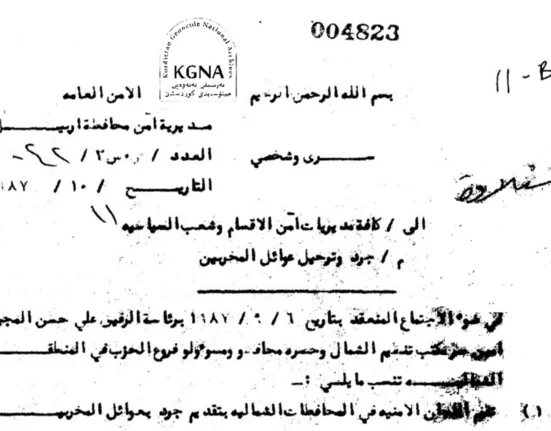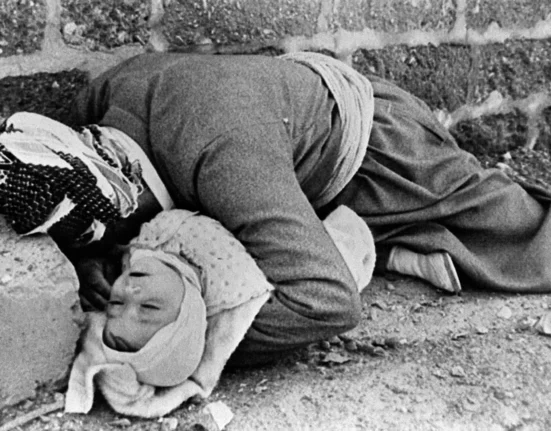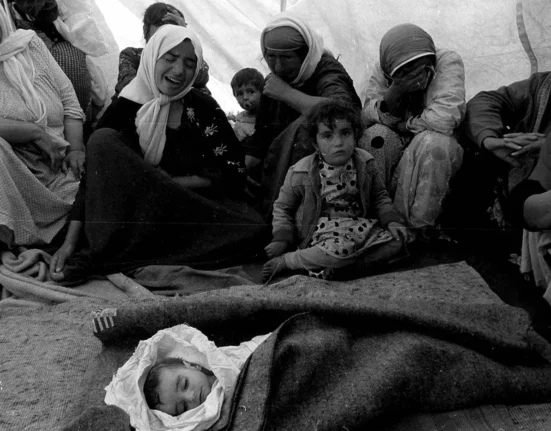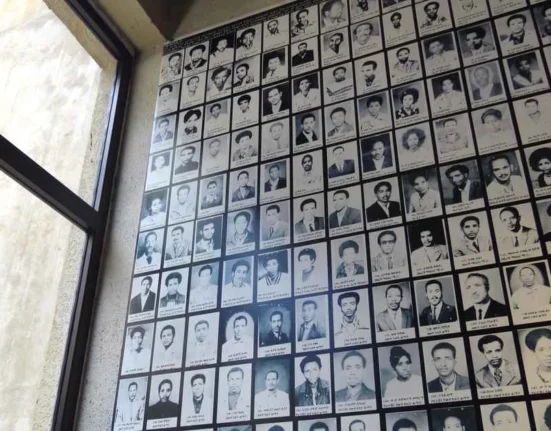The Dakān Cave Massacre – 1969
Dakān was a small village near the Khazir River, at the foot of Mount Khairi in the Shekhan region, with about 20–30 families engaged in farming.On 18–19 August 1969, a dark massacre was committed against the villagers of Dakān by the army of the Iraqi state under the Ba’ath Party. Most of the villagers were women and children who, in order to escape the brutal assault of the Ba’ath army, took refuge in the cave where they were burned alive. According to survivors, families of victims, and investigations, 77 people were killed, six of them pregnant women, and nine others suffered severe burns but survived..
After the Ba’athists seized power through a military coup between 17–30 July 1968, they initially—like previous governments—sought to consolidate their rule by entering into negotiations and promising to resolve the Kurdish question. Yet, very soon, they reneged on their commitments and, as before, avoided implementing Kurdish demands. The Iraqi army resumed its assaults on Kurdish villages, towns, and Peshmerga strongholds. Among the targeted areas was (Akre–Shekhan), which endured the Ba’ath army’s attacks along with armed collaborators (Jash), resulting in many victims, including the atrocity of the Dakān Cave massacre.
Details of the Massacre
According to witnesses, on 18–19 August 1969, at 4 p.m., the Ba’ath army carried out a mass killing of defenseless civilians inside Dakān Cave. Villagers without weapons or means of defense had sought refuge there. One witness recalled: “The enemy shelled the surroundings and the village all night until morning, then the planes came. I counted 14 planes, arriving two by two, dropping bombs. On one side the planes bombarded, on the other side the artillery.” To save their lives, people fled into the cave. Once the army, through Jash collaborators, discovered their hiding place, they committed an atrocious, inhumane act—setting fire at the cave’s entrance. The number of victims, according to varying accounts, ranged between 70–80 people. Among them were 29 women, 6 pregnant women, and 37 children (7 under the age of one); the others were elderly men. In general, the victims’ ages ranged from infants in their mothers’ arms up to 80 years old. Nine others, severely burned, survived and were treated secretly in Akre at relatives’ homes, since taking them to hospitals risked arrest. One survivor recounted: “A doctor at Akre hospital told one of our relatives: don’t bring them here, we might all be arrested—send the medicine home instead. Out of seven members of my family, only I survived.”
After the Massacre
Sixteen days later, Peshmerga forces reached Dakān Cave and witnessed a horrifying scene. No one could approach the cave due to the charred corpses and the conditions in the area. About two kilometers away from the Dakān village cemetery, the Peshmerga, together with families of the victims, decided to bury the remains in four mass graves, each about half a meter deep due to the difficulty of digging through rock. The bones and remains, along with the victims’ clothes and belongings, were wrapped in large sheets and buried. Veteran Peshmerga Haji Mirxan Dolmari said: “Burying them in this way was an extremely painful decision, but we had no choice and agreed with the families. My eyes fell on the skull of a small child, and I personally counted the skulls of seven infants under one year old.” He estimated the number of victims at about 80.
Victims came from several families, including:
- 14 martyrs from the family of Mahmoud Salim Dakānī
- 22 martyrs from the family of Rasul Dakānī
- 7 martyrs from the family of Darwish Sabti Barzani
- 15 martyrs from the family of Ramazan Dakānī
- 13 martyrs from other households, plus six infants with their mothers.
To this day, the bones and remains of the victims remain beneath the rocks and trees in front of Dakān Cave, within the four mass graves. Families of the victims cannot forget the tragic images of their loved ones burned, especially the haunting sight of mothers fused with their infants, as later discovered in a mass grave in the Hazeri area of Mosul: a mother who had bent over her child to protect him, both burned together.
According to survivor Hali, a villager from nearby, after the massacre “because of the conditions at that time and the brutality of the Ba’ath army, we could not transfer the bodies to another place. We buried the bones and remains in front of the cave, under the rocks and trees. They remain there to this day.” He added: “A few people, including three women and an elderly man, tried to save themselves. With half-burned bodies, they went in search of water, but due to pain, wounds, and weakness, they suffocated and died. Their bodies remained for a long time until animals devoured them.”
The Dakān Cave Massacre File before the Iraqi High Criminal Court
The case file of the Dakān Cave massacre was one of those submitted to the Iraqi High Criminal Court. However, due to negligence in follow-up and the reduction of the Court’s scope of authority, no final decision has yet been reached. Like 14 other cases, justice remains pending.










Leave feedback about this